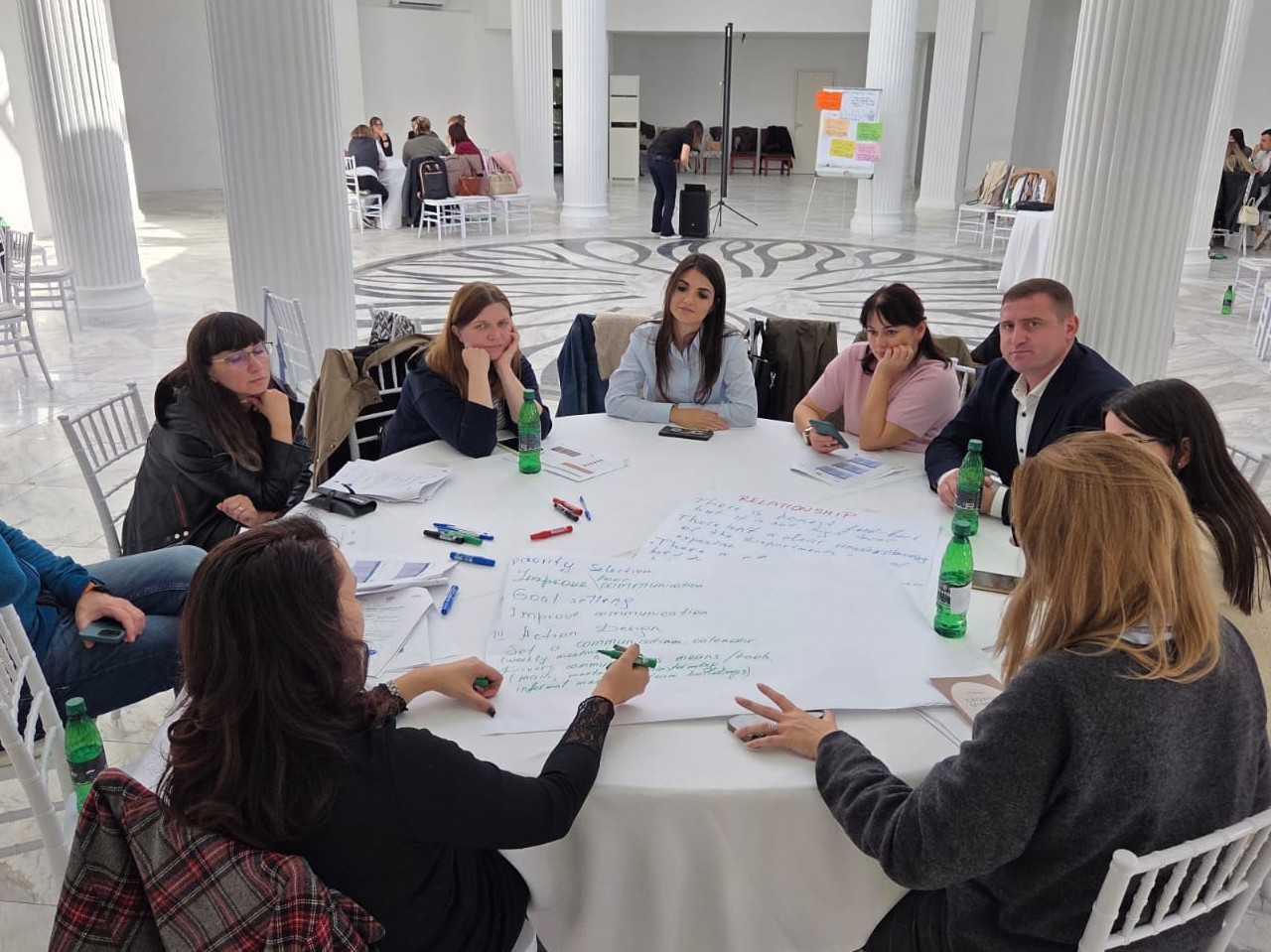Soft & Hard Skills Synergy - The Perfect Mix That Drives Success
In an ever-changing world, as we strive to keep up with the fast pace, we tend to emphasize professionalism, hard skills, and the acquisition of new competences, constantly adapting to growing demands. Participation and active involvement in the NBM LearnOrgLab project shifted my perspective. I’ve come to realize that professional skills alone are not enough. Only a symbiosis of hard and soft skills truly defines you, makes you complete, and shapes your personality.
In my view, people are the most valuable asset in any team or organization. No strategy or process can replace the strength of a connected and motivated team. I appreciate the individuals I work with – their contributions and potential. This is why I place high value on any opportunity that helps me grow as a leader and build stronger relationships with my team. Trainings that enhance the ability to communicate and understand the team are meaningful to me, as it builds trust and empathy. Whether it’s leadership development, exploring new management approaches, metacommunication, giving and receiving feedback, or conflict resolution, all of these training opportunities feel like a good investment in our future success.
The lessons I’ve learned have helped me improve my communication skills, manage emotions, negotiate, and better understand my conversation partners’ perspectives. Some practices, such as nonviolent communication (NVC), can also be applied in interactions with family members and friends. NVC is a communication approach focused on fostering empathy, understanding, and connection while minimizing conflict. It involves four components: observation, feelings, needs, and requests. It aims to create a space where individuals can express themselves honestly and compassionately, leading to more fulfilling relationships and collaborative solutions.
Another project, Training of Trainers (ToT), came up spontaneously and felt like a personal challenge. Not being a big fan of public speaking and unfamiliar with the techniques and approaches involved, I found myself in a project that constantly pushed me out of my comfort zone, challenged me, sparked creativity, demanded critical thinking, and required quick actions. I believe being a good trainer is a vocation, a talent, a charisma. However, some skills can be acquired, and when you have a range of tools and techniques at your disposal to address specific topics, manage your emotions, and handle unpredictable situations or difficult participants, it gives you confidence and reassurance that everything will go smoothly.
The positive impressions related to this project motivated one of my colleagues to join the second ToT cohort, and I was happy to encourage and support her.

In the second stage, I had a different experience – not as an active participant, but as a trainer. I was full of emotions. Moreover, we were two presenters, which implied even more responsibility. Every action had to be coordinated, every step carefully planned and executed to ensure the presentation followed the script, stayed within the allocated time frame, and covered the key points engagingly and interactively. We focused our research on nonverbal communication. And the more I explored the topic, the more I realized how fascinating it is, how much meaning it conveys, and how much awareness and attention it demands.
For instance, did you know that more than 90% of communication is nonverbal? Amazing! According to the 7-38-55 rule, only 7% of our message is conveyed through the words we speak, while the nonverbal components, such as the tonality of our voice and pace of speech, make up 38%, and body language and facial expressions account for 55%. This encourages you to wear a Duchenne smile (smiling genuinely, with your eyes) more often – especially when you know it takes only 7 seconds to make a first impression. That’s how quickly the brain starts to judge someone based on appearance, posture, facial expression, etc. Can you change it? You can, but it’s not easy. First impressions tend to stick due to confirmation bias, as people seek evidence that confirms their initial opinion. And of course, we should not neglect eye contact – one of the most powerful forms of nonverbal communication. It builds connection and trust, and it shows engagement and confidence.
Recently, I’ve started benefiting from personal coaching as part of the NBM LearnOrgLab project. I’m very curious and can’t wait to see the outcome of this experience. To be honest, I initially was quite skeptical, but I figured that if the opportunity came my way, it would be a missed chance not to take advantage of it. The experience feels like an exercise of self-awareness – validating emotions, recognizing needs, and understanding personal desires. It helps clarify what you truly want and breaks down ambitions into clear, achievable goals.
I am deeply grateful for this project and the incredible opportunities it offers, as well as for the chance to learn from such qualified trainers and specialists. It's a unique experience that supports personal and professional development. This journey continuously inspires me to grow and become better every day.
